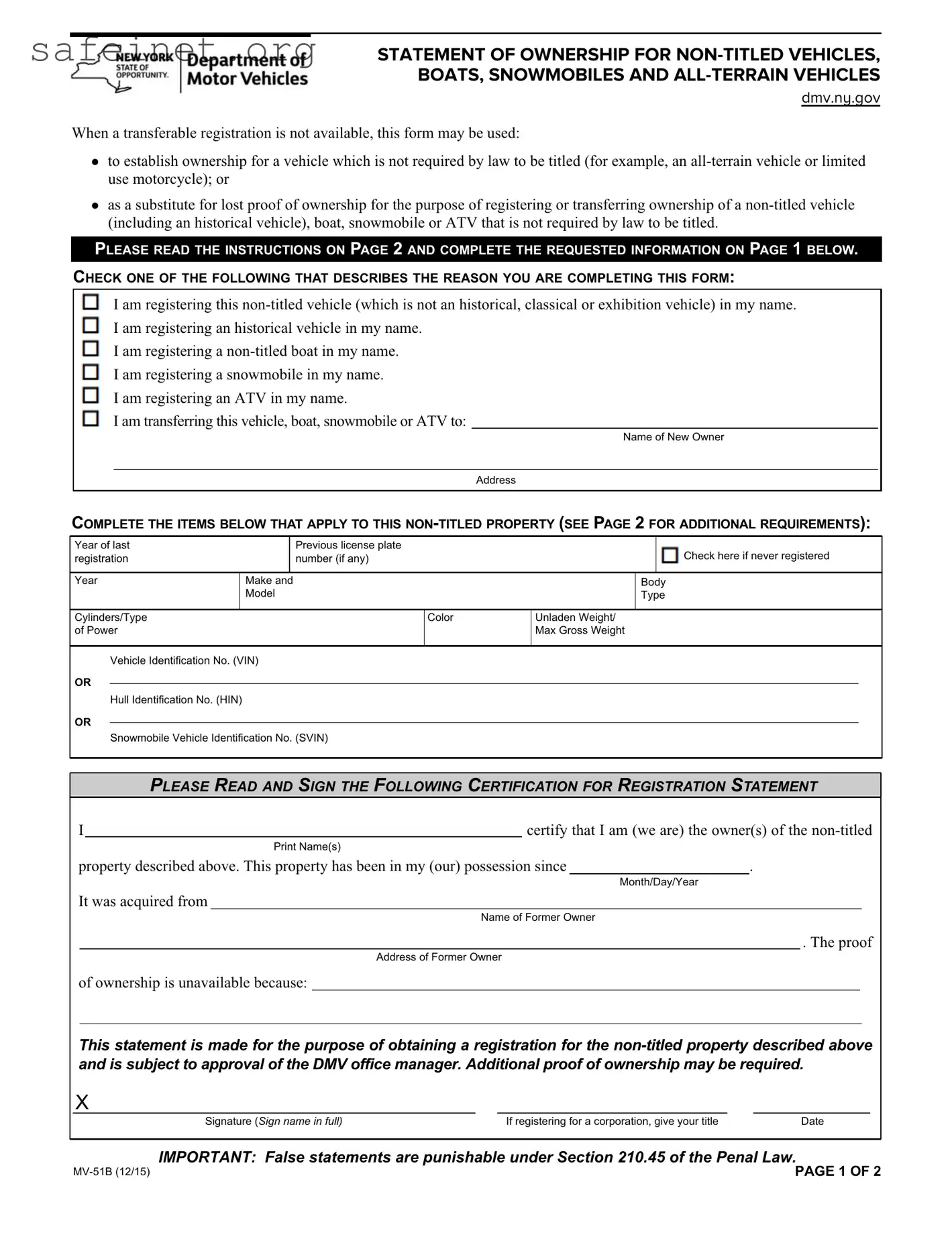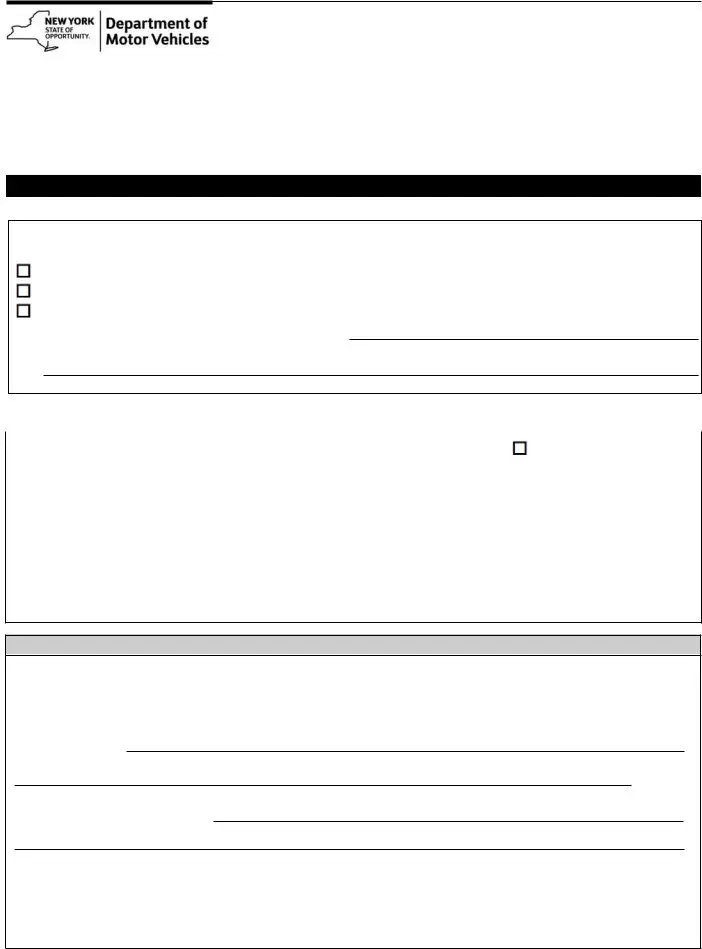Note: Acceptance of this form as proof of ownership is at the discretion of the DMV. If it is acceptable for registration purposes, you will be allowed to register the vehicle, boat, snowmobile or ATV, and DMV will issue a non-transferable registration document to you. Title Bureau staff will make the final determination as to whether or not proof of ownership will be accepted, and whether or not DMV will issue a transferable registration to you.
INSTRUCTIONS:
1.To REGISTER a non-titled vehicle, boat, snowmobile or ATV, you must bring the following documents to any Motor Vehicles office:
•a completed form MV-51B*;
•a Bill of Sale or completed “Certificate of Sale or Transfer for 1972 or Older Vehicles or Any Other Non Titled Vehicles” (MV-51)*;
•verification of the VIN, HIN or SVIN (a tracing or photograph of the VIN, HIN or SVIN, or a signed statement from police officer);
•a completed “Vehicle Registration/Title Application” (MV-82);
•proof of name and date of birth (see form ID-82, “Proofs of Identity for Registration and Title”); and
•an insurance ID card, if required.
* If the non-titled vehicle, boat, snowmobile or ATV was in your possession for less than one year, and it was never registered by the former owner, or the former owner lost the registration and cannot obtain a duplicate, the former owner must complete the MV-51B and MV-51/Bill of Sale.
2.To TRANSFER a non-titled vehicle, boat, snowmobile or ATV, the former owner must give the following documents to the new owner:
•a completed form MV-51B; and
•a Bill of Sale or a completed “Certificate of Sale or Transfer for 1972 or Older Vehicles or Any Other Non-Titled Vehicles” (MV-51).
3.To REGISTER OR TRANSFER a motor vehicle that qualifies for historical or vintage plate registration**, follow the instructions in #1 or #2 above.
•To register an automobile or truck that qualifies for historical license plates, you may bring this form and any other required documentation to any Motor Vehicles office.
•To mail your registration for an automobile, truck or motorcycle that qualifies for historical or vintage license plates, send this form and any other required documentation to:
NYS Department of Motor Vehicles
Custom Plates Unit, Room 414
6 Empire State Plaza
Albany NY 12228
**A motor vehicle eligible for historical license plates - any vehicle manufactured more than 25 years before the current calendar year that is used only as a collector’s item or exhibition piece, and not for daily transportation (see form MV-440H).
A motor vehicle eligible for vintage license plates - any vehicle manufactured more than 25 years before the current calendar year that is used only as a collector’s item or exhibition piece, not for daily transportation, and you are registering with the original plates that were valid in NYS in the year the vehicle was manufactured (see form MV-440V).
DMV staff may need additional documentation to register an historical vehicle if the year, make and model of the vehicle has not previously been approved by DMV for historical registration.
Note: Form MV-51B cannot be used for abandoned vehicles; contact your local police department.


 I am registering this
I am registering this  I am registering an historical vehicle in my name. I am registering a
I am registering an historical vehicle in my name. I am registering a  I am transferring this vehicle, boat, snowmobile or ATV to:
I am transferring this vehicle, boat, snowmobile or ATV to: